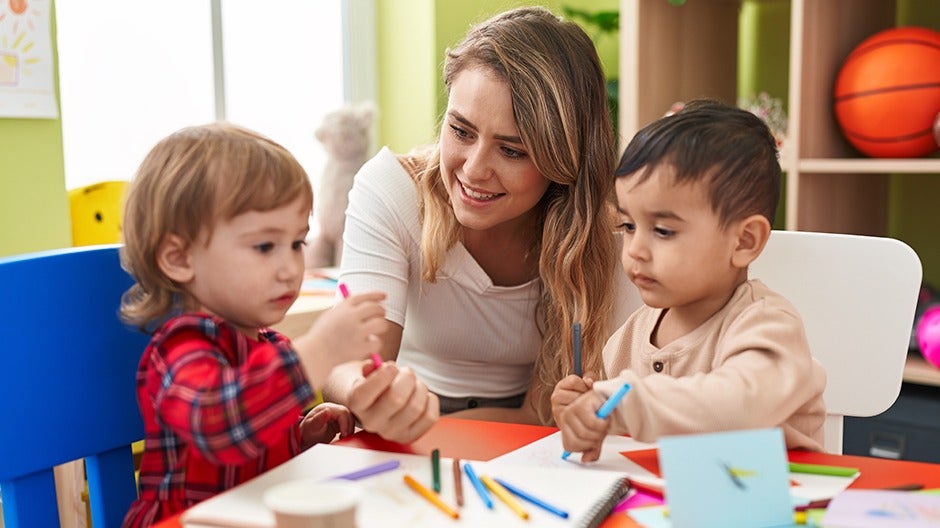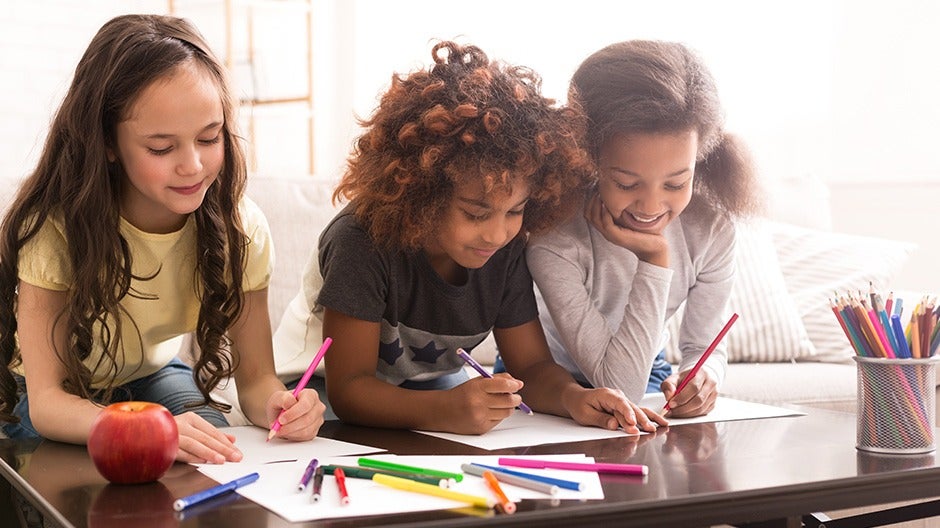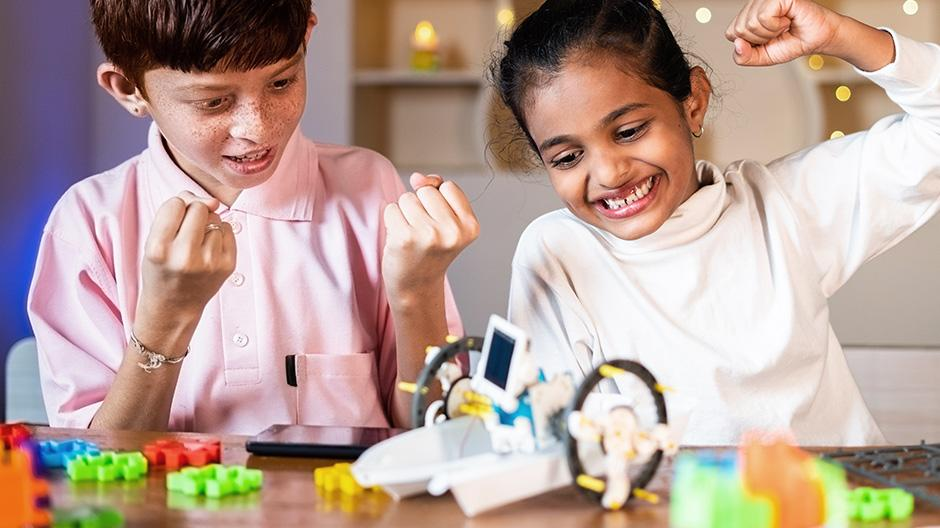What Is Shared Reading?
Shared reading is a collaborative activity during which a child and a grown-up share the reading of a book in order to model strategies that proficient readers use.
It can take different forms depending on the stage of reading, but as a general rule, it combines both seeing and hearing the words in order to understand the role that text plays in reading, as well as talking about the story together.
You can implement shared reading in a few different ways. When your child is younger, you can encourage them to read some of the words during your read-aloud time. As they progress in their reading journey, you might take turns reading pages.
Shared reading is all about making reading into an interactive experience for your child. The various components of shared reading help to model reading fluency and expression for your young learner.
This technique helps guide your child’s reading time with interactive questions and active dialogue about the book you’re focusing on. It allows your child to feel supported while reading a book at or slightly above their reading level.
Since it’s all about connecting the words they hear and they see words written, many shared reading exercises emphasize visual elements on top of reading aloud. For example, you can opt for big books with limited, bold words and bright pictures.
But big books aren’t your only option. You could also utilize printed articles as well as poems or songs written out on large notepads. The world is your oyster!
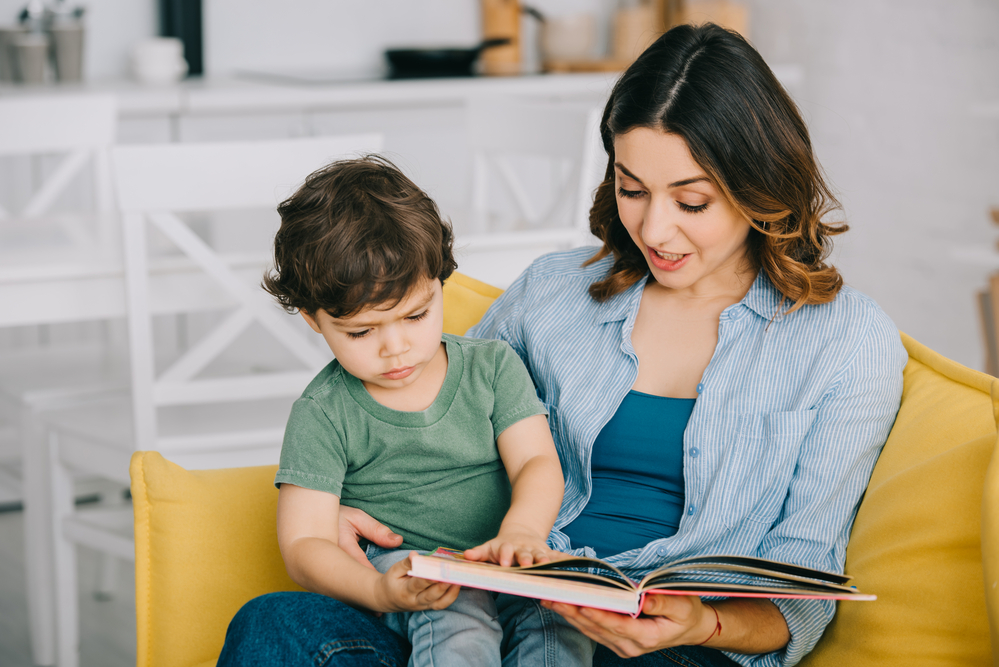
Why Use Shared Reading?
Shared reading allows you to engage your child in a story while introducing them to the reading process.
By explicitly showcasing the reading strategies your child will need to read fluently and frequently, you can help guide their learning and improve their reading proficiency.
Doing this gives your child the reassurance that since you’re reading together, you can help with all the big, new words they may not know yet. You can also improvise in real-time — if you notice your child stumbling over a specific word, pause and lead them through it.
You’re your child’s most important role model. By incorporating shared reading, not only will you grow even closer to your child, but they will gain some of the confidence you showcase when reading aloud to them expressively.

The Shared Reading Process
If you’d like to implement shared reading time, the first step is to pick a book! Here are a few things to look for when choosing a book:
- Does it have clear, uncluttered text that is easy to follow?
- Is it engaging? Silly books or books about a subject they love work best.
- To practice inferring meaning, does it have pictures that enhance the story?
- To practice phonological awareness, does it have rhymes or alliteration?
Alternatively, you can get crafty by writing a story on a large poster board or notepad paper. It can be based on a book in your library, or you can make up a story together.
If you decide to go this route, you might include pictures or drawings so your child doesn’t miss out on any illustrative magic!
As we’ve mentioned, the name of the game when it comes to shared reading is “participation.” You want to frequently pause in your reading to address any changes in the story or characters.
While you’re talking about the story, you might consider asking your child questions. Here are some to consider.
Before Reading
Asking predictive questions can be incredibly helpful in building your child’s reading skills.
Not only does doing this call attention to your child’s predisposed knowledge, but it also prepares their brain for all the possible things that might happen based on the details they can gather from the book or from information they know apart from the book.
For example, if you’re reading a book about dinosaurs together, they might guess that a t-rex will be one of the characters. If there is a picture of a character frowning on the cover, they might guess that the protagonist is unhappy about something that happens to them.
Point out all of the places where your child can discover clues about the story’s potential events. The title and cover image are great places to start! You’ll be amazed at how many context clues your child will pick up on from a single image.
Here are some examples of predictive questions you can ask before you begin reading:
- After seeing the picture on the book cover, what do you think this story is about?
- Does the character on the cover look happy, sad, or scared? Why?
- Why do you think the cover uses these colors? Do you think the story will be funny, sad, or happy because of the colors?
- Based on the title, what do you think might happen at the end of the story?

During Reading
In the midst of reading, it’s essential to make sure you and your child are on the same page. We mean that literally and figuratively!
Pause every now and then to check in with your child and talk about the story. If you find that they seem disengaged during parts of the story, feel free to act confused yourself (kids love the silly-oblivious-parent gag!).
Ask them if you’re reading it right — did Billy really just eat his brother’s grilled cheese when he wasn’t looking? Did the little girl really see a leprechaun riding a unicorn across the street?
Whatever interesting plot point you’ve got in front of you, feel free to check with your child to make sure you two are in the same spot! You can also ask them predictive questions about the story as you gather more pieces of information.
Going along with our example, before you turn the page, consider some predictive questions together, like these:
- What do you think will happen now that Billy’s brother saw grilled cheese crumbs stuck to his mouth?
- Do you think Billy will get away with it? Why or why not?
- What would happen if Billy’s mom or dad caught him instead of his brother?
- How would you feel if you were Billy’s brother? How would you feel if you were Billy?
After Reading
Before you nestle the book back into your child’s bookshelf, take a moment to talk with them about the story. There doesn’t necessarily need to be anything formal here.
Think of it as if you were reviewing a movie you just saw in the theater with a friend. It’s not about quizzing your child, but about getting their opinion! Here are some examples:
- What did you like about the story?
- What didn’t you like?
- Why do you think the main character acted the way they did? And what about the reactions of all the people around them?
- What would have happened if a plot point in the story was changed? Would it affect the outcome?
All of these are great questions that should get your child off the ground and running! Feel free to share your answers, too, giving your own opinions of the story for an engaging conversation.
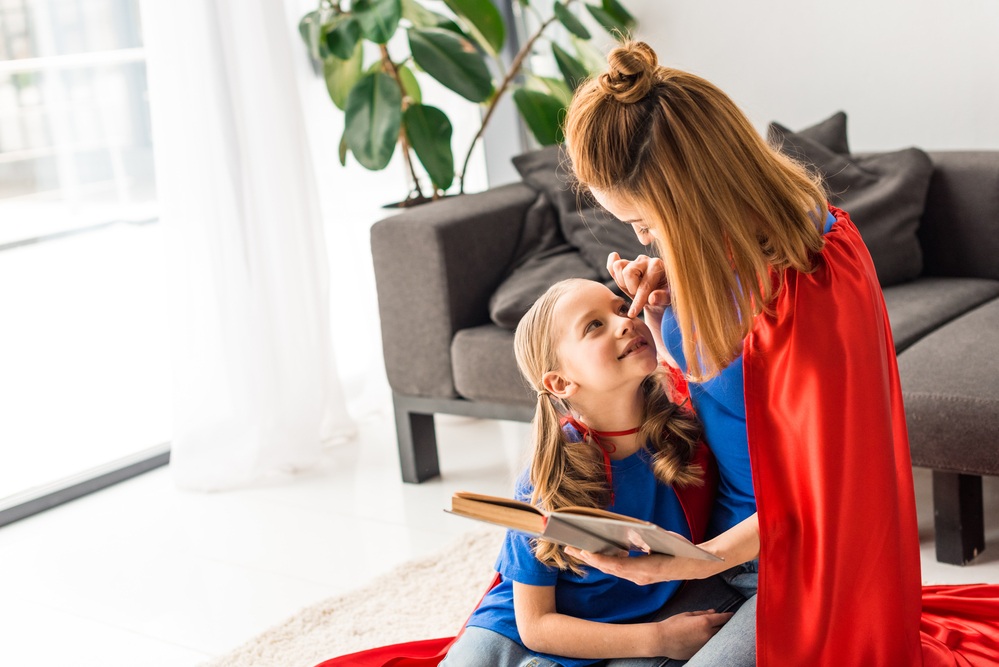
Shared Reading Tips
As you start shared reading, there are a few pointers you can keep in mind to make sure the method is setting your child up for success.
Keep A Goal In Mind
Rome wasn’t built in a day and neither was a fluent reader. By isolating specific skills that you want to work on with your child each time you read together, you can be sure you’re touching base on all the skills they will need (and keeping things fresh and fun!).
Use Choral Reading
Once you begin reading, you can start paying attention to the little things that might trip your child up on the first go-round. Keep note of any words they might be uncertain about, and watch them match their fingers to the text as they read to see if they are reciting from memory.
To encourage their confidence, try “choral” reading with them — reading at the same time. This can help them sound out their words. Start with something short and predictable, like a nursery rhyme or a limerick.
Choral reading can also help foster confidence in your child. Reading aloud can be pretty scary to a kid still working on their fluency and speech skills. By reading with them at the same time, you can give them a safety net as they work their way through sentences.
As you gradually begin to read more, experiment by “dropping out” of your choral reading practice every now and then. Begin by omitting a few words, then work your way up to trailing off and allowing your child to take the reigns.
Reread Favorite Stories
At HOMER, we are huge proponents of rereading texts!
Many parents are initially hesitant when they notice their child selecting the same book over and over again. But there are so many valuable lessons a child can learn from reading the same book twice.
By rereading books, your child will pick up on details they may have missed before. They will also be able to draw deeper connections to the text. Not to mention, they’ll get a chance to revisit some words that may have challenged them on their first read-aloud with you.
Shared rereading can help improve your child’s comprehension and fluency even more, as you’re doubling down on their familiarity with the text and using it to their advantage.
Previously challenging words will become easier to pronounce and your child will be able to differentiate more specific plot points in the story, making for an even more engaging discussion about the book.
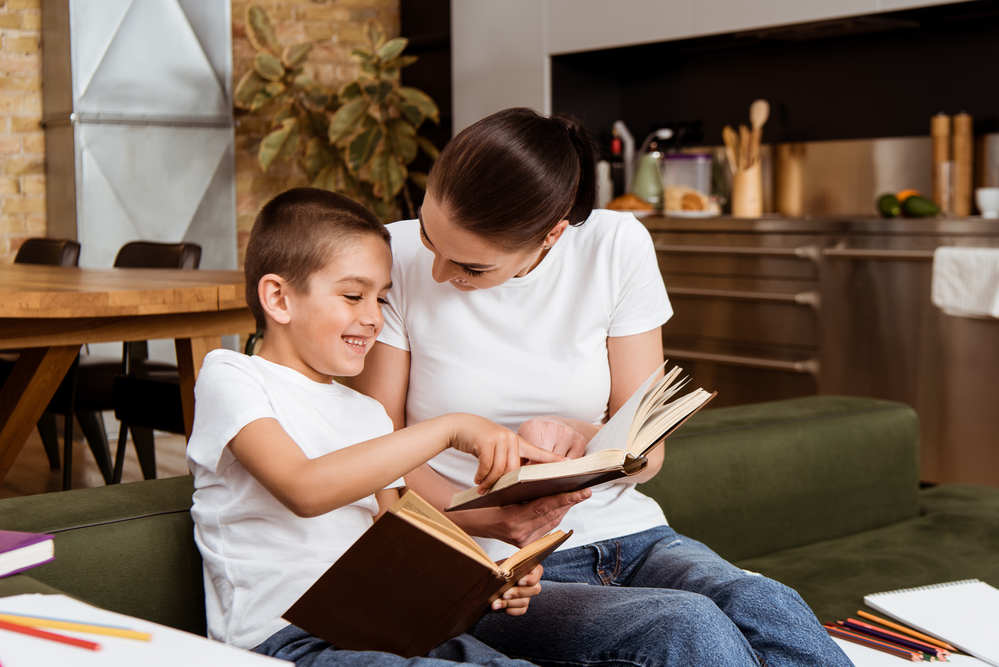
Shared Reading = Easier Comprehension
All in all, shared reading presents you with a unique opportunity to bond with your child while modeling what real reading looks like in real-time! Your child will gain many skills in confidence, fluency, and comprehension by reading with you.
But we’re realists, too. We know that not every night can be a shared reading night. For those evenings when there’s a little too much on the family calendar, try our Learn & Grow app, which is full of personalized, exciting reading exercises for your child to utilize!
We hope these tips and tricks were helpful. We’re so happy to be a part of your reading-at-home team!



